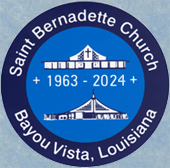|
Pope Leo XIV

Although he was pope from the moment he accepted his election May 8, the inauguration Mass - which replaced the papal coronation after the pontificate of St. Paul VI - formally marks the beginning of his ministry with his reception of the fisherman's ring and his pallium, a wool band worn around his shoulders. The inaugural Mass for the Beginning of Pontificate will be held at 10 am in St. Peter's Square on Sunday, May 18th. This Mass will be the formal installation ceremony where Pope Leo XIV will receive the fisherman's ring and the pallium as symbols of his papal office.
The Inauguration Mass
The theological significance of the inauguration Mass lies in its public witness to the pope's role as Vicar of Christ. The rite is not a sacrament - since the pope is already a bishop - but a liturgical celebration that includes the conferral of the pallium and the profession of faith. The pallium, a woolen band placed on the shoulders of the pope (and later archbishops), symbolizes the yoke of Christ and the pastoral care of the flock entrusted to him. Its use dates to the fourth century and was gradually incorporated into papal ceremonies by the early Middle Ages. Unlike a coronation - which emphasized temporal kingship and was last used by Pope Paul VI in 1963 - the modern inauguration emphasizes service, mission, and the pastoral office. Paul VI's renunciation of the papal tiara during the Second Vatican Council marked a definitive theological shift, reemphasizing the pope's role as the "Servant of the Servants of God."
www.catholic365.com
The Name Leo
There is a common thread that ties together the legacy of all the popes who have taken the name Leo - a thread that weaves through the centuries and culminates now in Pope Leo XIV. From Leo the Great to Leo XIII, the name "Leo" has consistently signified a pontificate marked by courageous clarity, doctrinal integrity, and a deep pastoral concern for both the Church and the broader world. Leo the Great defended the truths of Christ's divinity and humanity with theological brilliance while protecting the city of Rome from physical devastation. Leo II emphasized sound doctrine and liturgical reform. Leo III crowned Charlemagne, signaling the intertwining of Church and culture. Leo X, though controversial, presided over the Church at a time of immense artistic and intellectual flourishing. Leo XIII, in turn, confronted the upheavals of modernity with calm resolve, grounding the Church's engagement with the world in both reason and Revelation. Together, these popes named Leo represent a legacy of steadfast leadership in times of crisis, vision in times of change, and a consistent call for the Church to be both guardian of the truth and servant of humanity. In choosing this name, Pope Leo XIV enters a lineage defined not by political power or personal ambition, but by a courageous fidelity to the faith and an enduring hope in the renewal of the Church for every age .
www.catholic365.com
Why is the pope's ring called the "Fisherman's Ring" and what is its secret?
The "Ring of the Fisherman" is an essential attribute of papal vestments, no less important than the tiara. It is not passed from one pontiff to another, but is made for each pope individually. What secrets does this symbol of the papacy hide, and why is it called the "Ring of the Fisherman" and not otherwise?
The head of the Catholic Church is considered the heir of the Apostle Peter, one of the most faithful disciples of Christ. Before baptism, he was a simple fisherman, and the name of this profession began to be applied to him later as a metaphor. In Christianity, the apostle is considered the "catcher of human souls", who gathers sinners and instructs them on the true path.
As a follower of Peter, the Pope of Rome also catches human souls, preventing them from wallowing in the abomination of sins. That is why the papal ring was called the "Ring of the Fisherman". It is decorated with the image of the cross and the Apostle Peter casting a net into the sea. But at the same time, the ring of each pope is unique. It is made for the new pontiff and decorated with initials.
Until 1842, the papal ring with his name served as a seal to certify letters and important documents. The "Ring of the Fisherman" was made of pure gold, and the dean of the College of Cardinals presents it to the elected pope during the coronation ceremony. At the same time, the head of the Catholic Church should reverently fall with his lips to the relic, as a sign of humility and respect for the great mission of the successor to the work of the Apostle Peter.
After the death or abdication of the pope, his ring is destroyed. Previously, this was done to prevent cardinals from forging seals on documents. Nowadays, when papers are no longer sealed with a ring, this is just an important tradition. The custom of destroying the ring, and then making it again, served as a reason to call it the "phoenix ring".
www.pictolic.com
|

